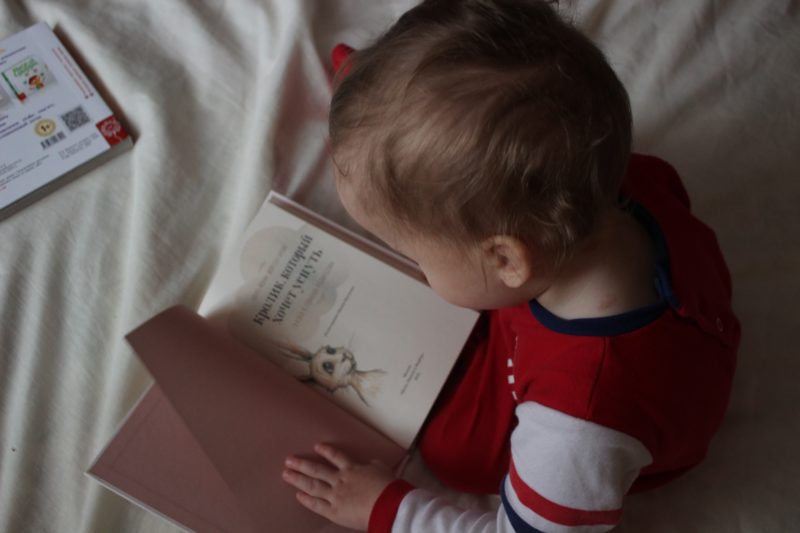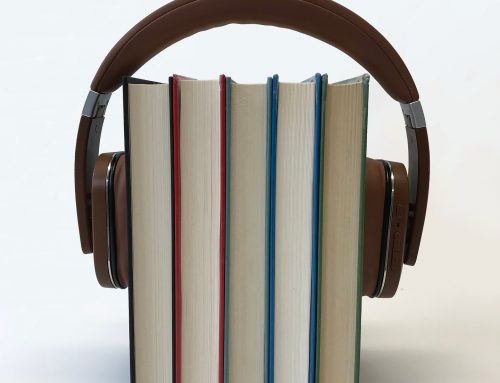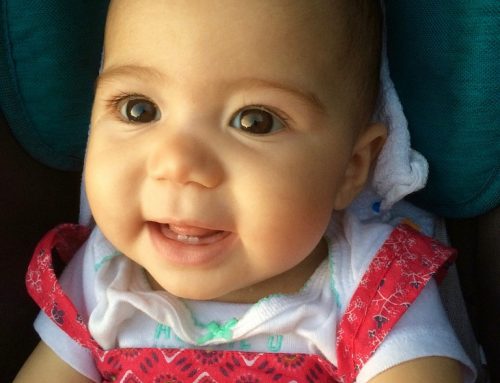Last Christmas, I presented my then 18-month-old daughter L with three nicely wrapped packages. She opened the first one, a stuffed animal and shrugged. She lingered a little longer on the second one, jigsaw puzzles, before moving it aside to open the third. As the wrapping paper parted to reveal a set of baby books, my ordinarily stoic daughter’s face lit up with her biggest smile as she loudly proclaimed, “Wow!”
Her reaction was my Christmas present. Since then my daughter’s love for baby books has gone from strength to strength. She thoroughly enjoys when we go through children’s books together, discovering new colours, objects, shapes, animals, and places.
The benefits of reading to your baby
Many experts say reading to your child at an early age has many advantages [1]. The sounds your voice makes, the repetition of words spoken and the musical quality of the rhymes all work towards stimulating their mind. It’s also such a lovely way to bond with your baby. The intense concentration and focus on L’s face as she attempts to figure out the content is mesmerising. She even quizzes me on the subject matter, exclaiming, “good job!’’ when I correctly name each animal.
Other benefits include:
- Psychological and emotional development: This is enabled through your facial expressions and different voices used when reading
- Language development: Consistently reading to your baby helps them pick up words quicker
- Cognitive skills: The child takes in the information being read out and slowly turns it into knowledge
Baby books your children will love
You can spend many enjoyable reading hours with your children. Here are some recommendations as per age group.
Books for babies
Infants love the sound of your voice. You have your baby’s undivided attention when you make funny faces or amusing noises when reading to them. Also, regularly reading bedtime stories will help with the difficult task of putting them to sleep without breastfeeding. During the day, you can look through baby books with high contrast colours together. As these help the optic nerves to develop.
Once they are old enough to grab the book, you can introduce them to interactive baby books with touch and feel, puppets, mirrors and different textures and patterns. These will help them learn new words along with abstract concepts. Opt for cloth or board books for babies, to avoid early wear and tear.
Books for babies (0-1 years) – our recommendations:
At team AnuChiAai, some of the books our kids enjoyed as babies:
- ‘Peekaboo’ series
- Eric Carle’s books: The Very Hungry Caterpillar, Very Busy Spider
- Spots and Dots
- I see a Monster
- Tickle Tickle Peter
- Mr Brown Can Moo! Can you?
- Goodnight Moon
- Fuzzy Fuzzy Fuzzy
- Ladybird’s touch and feel books: This Little Kitten, Twinkle Twinkle Little Star
- Doggies
Books for toddlers
Older babies like books with large pictures of everyday objects. They also love books starring their favourite animals. If you make the corresponding animal sounds, your toddler will soon learn to make them with you. Playschool kids can learn from books on the alphabet and numbers. I prefer books that dedicate a letter per page with objects that start from that same letter. It enables my daughter to distinguish the alphabet, rather than thinking ‘A to Z’ is one continuous word. A big hit with the toddler crowd is the ‘lift the flap’ book. Nothing gets my daughter giddy with excitement as much as revealing a cow, hiding behind a grass-coloured paper sheet.
Books for toddlers – our recommendations:
At team AnuChiAai, our kids enjoyed these books as toddlers:
- The Wheels on the Tuk Tuk
- Chicka Chicka Boom Boom
- Lift the flap books: Dear Zoo, The Busy Zoo, Lift and Look Space
- Giraffes Can’t Dance
- Brown Bear, Brown Bear What Do You See
- Julia Donaldson’s books: Room on the Broom, The Gruffalo, Goat Goes to Playgroup
- Dr Seuss books: The Cat in the Hat, A B C, Mr Fox’s Socks
- Little Fingers
- How to Catch a Star
- The Wonderful Things You Will Be
Books for older children
By the ages of 4 and 5, most children will be able to read simple text. Encourage them to read independently and regularly, and you will cement a lovely habit for life. You can start with books with short sentences accompanied by pictures to help them. Some kids also love activity books with puzzles like ‘spot the differences’, word search and 2D mazes. As the kids grow more confident in their abilities, you can slowly progress to higher reading levels.
Books for children (3+ years old) – our recommendations:
At team AnuChiAai, we are sure kids over 3-4 years will enjoy these books:






Fantastic article..have bookmarked it for future use too.. my daughter loved ladybird touch and feel books as an infant and now her favorite is Dear Zoo as a toddler.
Samta, thank you and glad you found this post useful! Dear Zoo was Anu’s favourite too when she was a year old :-).